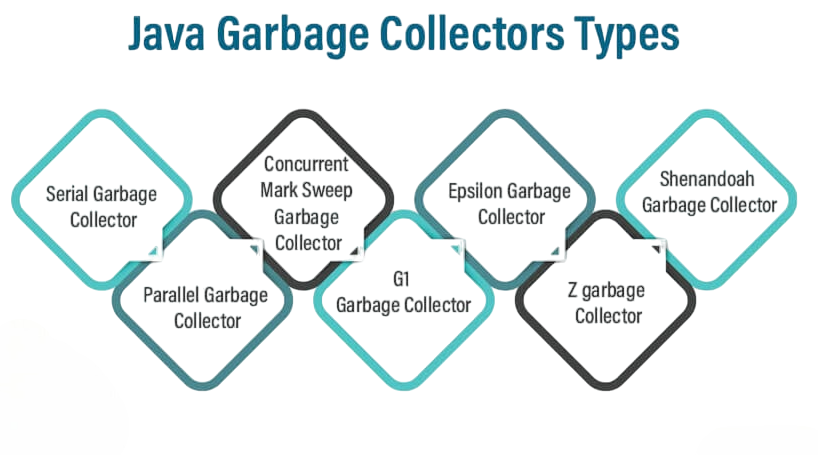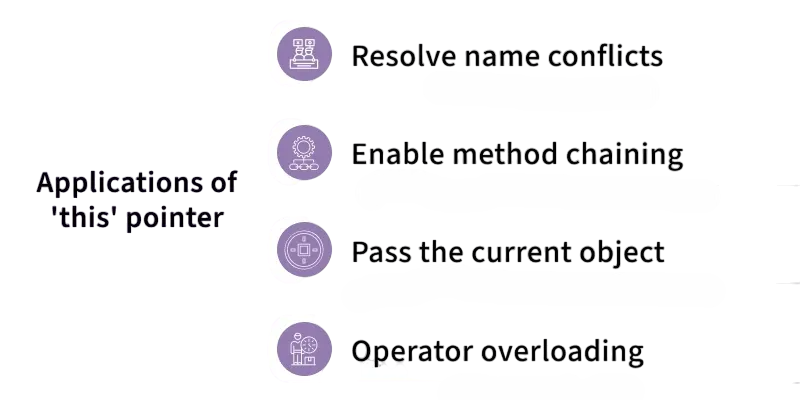
- Introduction to Pointers in Java
- Why Java Doesn’t Support Pointers
- Reference Types in Java
- Comparison with C/C++ Pointers
- Java Memory Management
- Garbage Collection Mechanism
- References vs Objects
- Security Concerns and Abstraction
- Alternatives to Pointer Use
- Use in Data Structures
- Impact on Programming Style
- Summary
Introduction to Pointers in Java
Pointers are variables that store memory addresses of other variables. They play a vital role in programming languages like C and C++, allowing for direct memory manipulation and efficient system-level programming. However, Java, a high-level object-oriented language, deliberately omits traditional pointer support in favor of safer and more manageable alternatives. To master these design choices and apply them across the development stack, exploring FullStack With Java Training reveals how developers can build secure, scalable applications leveraging Java’s memory model, backend robustness, and seamless integration with modern frontend frameworks. This design decision aligns with Java’s goals of providing a secure, robust, and platform-independent programming environment.
To Earn Your FullStack With Java Training Certification, Gain Insights From Leading Web Developer Experts And Advance Your Career With ACTE’s FullStack With Java Training Today!
Why Java Doesn’t Support Pointers
The absence of pointers in Java is intentional and primarily for security and simplicity. Allowing direct memory access through pointers, as seen in C/C++, opens up avenues for critical vulnerabilities, including buffer overflows, memory corruption, and segmentation faults. Pointers in Java eliminates these risks by abstracting memory access and disallowing pointer arithmetic. Instead, Java applications rely on automatic memory management through references and garbage collection. This approach not only reduces programming complexity but also increases application stability and prevents accidental or malicious damage to system memory. To explore how these principles evolve in hybrid paradigms, exploring What is Scala Programming reveals how Scala blends object-oriented and functional programming offering concise syntax, immutability, and powerful abstractions for building robust JVM-based applications. Furthermore, pointers introduce complexities in debugging and maintenance. By avoiding pointers, Java code becomes more readable, portable, and easier to manage across different environments.
Reference Types in Java
Although Java does not support explicit pointers, it introduces references that behave similarly in many practical scenarios. A reference in Java is an implicit pointer to an object stored in memory. When you create an object in Java, a reference variable points to its location in the heap memory. To contrast this with dynamic input handling, exploring What Is User Input in Python reveals how Python captures runtime data using input(), enabling flexible interaction and real-time decision-making in lightweight applications.
- String str1 = “Hello”;
- String str2 = str1;
In this example, both str1 and str2 refer to the same String object in memory. Any changes made through one reference (in case of mutable objects) are reflected through the other. However, unlike pointers in C++, Java references cannot be dereferenced manually or altered to point to arbitrary memory locations.
Would You Like to Know More About FullStack With Java Training? Sign Up For Our FullStack With Java Training Now!
Comparison with C/C++ Pointers
In languages like C and C++, pointers offer powerful features such as pointer arithmetic, memory allocation using malloc() or calloc(), and direct memory access. Java takes a different approach by abstracting these functionalities through its memory model. The absence of pointer arithmetic makes Java safer but less flexible in certain system-level operations. To understand how abstraction is further refined in Java, exploring Interface vs Abstract Class reveals how developers choose between contracts and partial implementations balancing flexibility, reusability, and design clarity in object-oriented programming.
| Feature | C/C++ Pointers | Java References |
|---|---|---|
| Memory Address Access | Allowed | Not allowed |
| Pointer Arithmetic | Supported | Not supported |
| Manual Memory Management | Yes | No (Garbage Collected) |
| Dereferencing | Explicit | Implicit |
| Use in Data Structures | Yes (Linked lists, etc) | Yes (via references) |
This distinction significantly enhances Java’s security model by restricting low-level memory access, which is a common source of bugs in C/C++.
Java Memory Management
Java’s memory model is managed by the Java Virtual Machine (JVM), which handles memory allocation and deallocation automatically. Memory in Java is divided into several regions: heap, stack, method area, and native method stacks. To understand how these regions impact application performance and scalability, exploring FullStack With Java Training reveals how mastering memory management, backend logic, and frontend integration equips developers to build efficient, enterprise-grade solutions.
- Heap: Stores all objects and class instances.
- Stack: Used for method calls and local variables.
- Method Area: Contains class-level information.
- Native Method Stack: Manages native code execution.
When a new object is created using new, memory is allocated on the heap, and a reference is returned. These references are stored in variables and used to access the object. Java programmers never interact with memory addresses directly; they work exclusively with references.
Garbage Collection Mechanism
One of Java’s standout features is its automatic garbage collection. The garbage collector (GC) runs in the background, reclaiming memory used by objects that are no longer accessible through any reference. This process helps prevent memory leaks and reduces the chances of memory corruption.

To explore how mastering such core concepts can shape your career path, exploring What to do after B.Tech reveals various options from pursuing advanced degrees to entering software development, where understanding memory management is key to building efficient applications.
- Employee emp = new Employee();
- emp = null; // Eligible for garbage collection
The garbage collector identifies that emp no longer refers to the Employee object and reclaims the memory, making Java programs memory-efficient and reducing developer responsibility for deallocating memory.
Are You Interested in Learning More About FullStack With Java Training? Sign Up For Our FullStack With Java Training Today!
References vs Objects
In Java, primitive types like int, double, and char are passed by value, meaning a copy is made. However, objects are passed by reference. When you pass an object to a method, you’re passing the reference to the object, not the actual object itself. To apply this understanding in practical scenarios, exploring Final Year Computer Science Project Ideas reveals how concepts like memory handling, object references, and method invocation can be used to build innovative solutions from data-driven apps to simulation engines.
- void updateName(Employee e) {
- e.name = “Updated Name”;
- }
This method changes the state of the object outside the method, demonstrating the reference behavior in Java. While you cannot manipulate memory locations directly, you can affect the object via its reference.
Preparing for Full Stack With Java Job Interviews? Have a Look at Our Blog on FullStack With Java Training Interview Questions and Answers To Ace Your Interview!
Security Concerns and Abstraction
The restriction on pointers enhances Java’s security posture. With no direct memory access, the potential for attacks such as pointer hijacking, buffer overflow, and segmentation faults is significantly reduced. Java enforces type safety and automatic memory management, thereby eliminating a class of bugs prevalent in C/C++ programs. These features contribute to cleaner code and more stable applications. To understand how such principles scale across enterprise systems, exploring Technical Architect reveals how architects design robust software ecosystems leveraging language features, design patterns, and infrastructure strategies to ensure long-term maintainability and performance.

Moreover, the abstraction encourages good programming practices by enforcing object encapsulation, type-checking, and memory safety. These design principles are critical for enterprise applications, financial software, and other systems requiring robust and secure operations.
Alternatives to Pointer Use
Even though Java lacks traditional pointers, developers can achieve similar functionalities using various features: references, object manipulation, and memory-safe constructs. These alternatives maintain control over data flow without compromising safety. To explore how such techniques are applied in real-world scenarios, exploring Logical Programs in Java reveals how structured problem-solving, algorithm design, and control flow mastery form the backbone of efficient Java development.
- Object References: Serve as indirect pointers to objects.
- Arrays and Lists: Provide indexed access and internal referencing.
- Collections: Structures like HashMap, TreeMap, and LinkedList encapsulate complex data management.
- Pass-by-Reference Emulation: Achieved through wrapper classes or array references.
For example, linked data structures in Java are implemented using object references to connect nodes.
- class Node {
- int value;
- Node next; // Reference to next node
- }
This structure replicates a pointer-based linked list without the security risks associated with direct memory access.
Use in Data Structures
Despite the lack of pointers, Java efficiently supports data structures like trees, graphs, stacks, and queues. These are implemented using object references, which offer safety and abstraction without compromising functionality. To compare how different languages handle such constructs, exploring C++ vs Java reveals how C++ offers low-level control through pointers, while Java emphasizes memory safety and simplicity helping developers choose the right tool based on performance, complexity, and application needs.
- class TreeNode {
- int data;
- TreeNode left, right;
- }
In this example, left and right act like pointers to child nodes. Internally, Java manages the references and memory allocation, allowing developers to focus on logic rather than memory details.
Impact on Programming Style
The absence of pointers shapes Java’s programming style to be cleaner and more abstract. Java developers focus more on object-oriented design principles, encapsulation, and modularity rather than memory management. This leads to more maintainable, readable, and scalable code. Additionally, Java’s use of interfaces, generics, and libraries reduces the need for manual memory manipulation. To appreciate how these abstractions evolved from low-level control, exploring What is C Programming reveals how C provides direct access to memory, pointer arithmetic, and system-level operations laying the foundation for modern programming languages and performance-critical applications. Some may argue that this restricts performance optimization. However, Java’s Just-In-Time (JIT) compiler and runtime optimizations offer sufficient performance for most applications, making the trade-off worthwhile in many scenarios.
Summary
Java does not support traditional pointers as found in C/C++ to maintain a secure and simplified programming environment. Instead, it relies on references to manage memory and object interactions. While this approach limits direct memory control, it ensures type safety, memory integrity, and ease of programming. Pointers in Java memory model, with features like garbage collection and abstraction, promote robust and scalable applications. To master these principles in real-world development, exploring FullStack With Java Training reveals how backend logic, frontend integration, and memory-safe design converge empowering developers to build enterprise-grade applications with confidence and clarity. For developers coming from pointer-heavy languages, Java offers familiar concepts with added safety and reduced complexity. Whether building enterprise systems, web applications, or mobile apps, Pointers in Java-free architecture supports high reliability and maintainability, making it a favored choice in many development environments.





